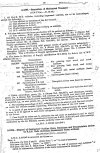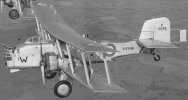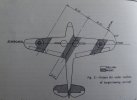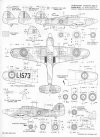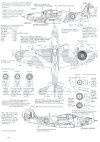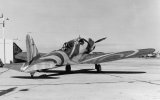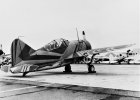My ex-RAF partner points out that 'distemper 'is usually a temporary, removeable colour, like a whitewash. So was that a stop gap measure before full repainting? Interestingly, the tank colours are G3 and G4. That's not to say that, just because the numbers match, the paints have any relationship
Not sure about the Overstrand wing NOT being aluminium dope, as it does, kind of match the shade of the top of the fuselage, so it could just be the angle. However, it's not very shiny, unlike the tail surfaces, and the lower wing. Could be wrong, but you'd have to wonder WHY it would be something other than aluminium dope. 'If the light bombers and fighters can have decorations, why can't we?' There's a cigarette card shows a silver top wing, and that's a 'colourised' photo, but you'd hardly call it authoritative, even if it is about the only contemporary reference. The tops of the engine cowlings are definitely a different colour, probably NIVO.
I should have remembered, the Wildebeest and Vincent had camo schemes, and then we get into the light green / light earth counter-shading. And I do have a Hawker Hector profile that has a fifth colour added!
Were secondary duties aircraft in WW2 painted yellow underside and camo uppers? Was THAT a regulation?
NOW, to pick Stona's brains further, I've seen a painting of the defence of Habbaniya in 1941 where an Anson is camo but the Harts are still silver. When shoukd out-of-the-way (of the main war that is. Habbaniya was one of the largest RAF basses anywhere) stations have their 'planes re-schemed? Of course, THEN we get into all the stuff about regulations being written up to make changes already in place 'official'.
Even sticking to silver wings RAF stuff gets complicated
Outside of the model-making community, am I a nerd to find this stuff endlessly interesting? I do Regia Aeronautica 'planes so I have to deal with four-or-five versions of the'same' pre'1941 colour! And also why I don't go on RA forae. It's so much more well-mannered around here



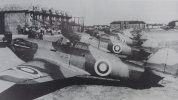
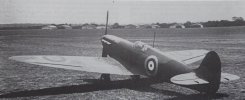
 I can't tell a Hart from a Demon in that image either, but I reckon that's a Gloster Gauntlet in front of it.
I can't tell a Hart from a Demon in that image either, but I reckon that's a Gloster Gauntlet in front of it.